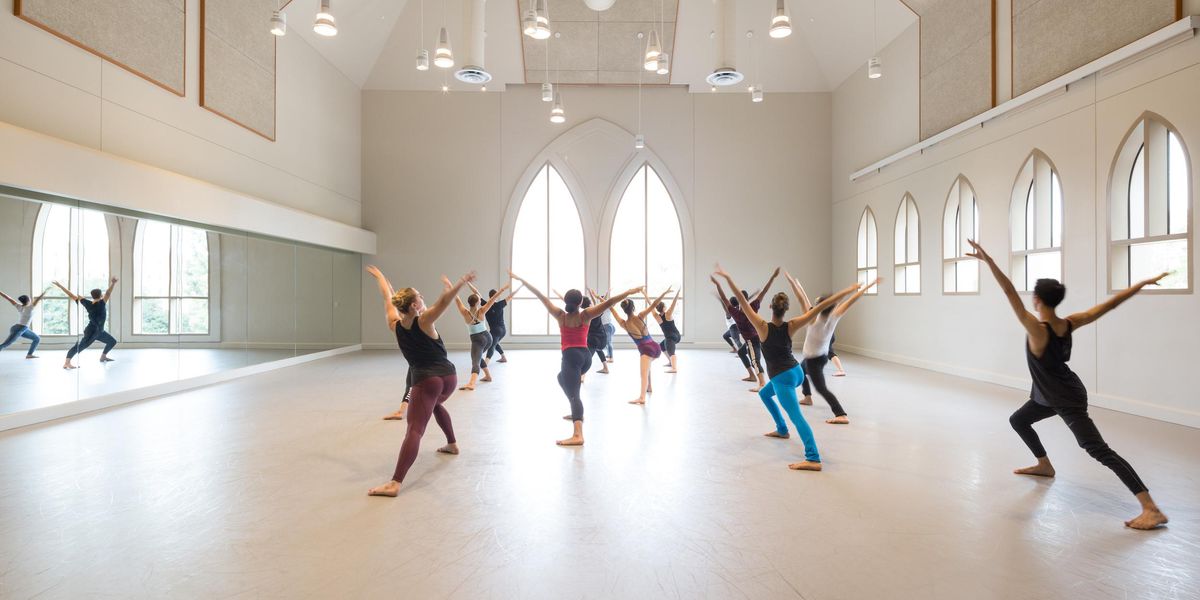Making It Happen: Bending Genre and Gender at CalArts
Bending Genre and Gender at CalArts
Members of Daughters of Sappho in the collective’s first concert.
P
hoto: Leah Case, Courtesy Greene.
“I’m a singer, songwriter, and harpist,” says Paris-born Naomi Greene, a junior at Valencia-based California Institute of the Arts, “and I wanted to do something with as many art forms as possible.”
Before you could say “voilà,” that desire quickly became reality as Daughters of Sappho, an interdisciplinary arts collective, was born. An exemplar of the CalArts credo—one that fosters collaborations between disciplines—the collective is made up of Greene, choreographer Tarren Johnson, and filmmaker Chloé Miller, as well as several other musicians.
With student grants totaling $1,000 used toward production costs, the group debuted at the college’s Sharon Disney Lund School of Dance Theater in early December, a mere three months after inception. Turning to Kickstarter, they raised an additional $1,000, and then booked themselves on a mixed bill at Dixon Place (a performance space on New York City’s Lower East Side) and at Bard College, where Greene had been a student before transferring to CalArts last September. Both East Coast shows were self-produced and also took place during December.
No ordinary concert, the performance at CalArts revolved around a 25-minute work set to Debussy’s Les Chansons de Bilitis (scored for two harps, two flutes, and celesta), with erotic poetry by Pierre Louÿs. Greene not only played the harp, but also recited the 12 poems (in French), moving stealthily about the floor while doing so, becoming part of Johnson’s choreographic tableaux.
While Debussy’s early 20th-century music conjured romance and a pastoral quality, the dancers (Hannah Anderson Rickett, Ffion Campbell-Davies, and Johnson), dressed in flowing beige costumes, were a heady mix of Isadora Duncan, Nijinskyan nymphs, and alluring Bausch-like femmes.
Says Johnson, who graduates in June with a degree in dance, “What brought me into this project was the idea of legendary female storytellers—that dance could be used as a means to create and empower female imagery onstage—of women passing down stories by means of body movement and body language. Since most of the audience doesn’t understand French, dance was the means of drawing architecture from the poetry to create these vignettes.”
Ten artists were involved with the initial program, which also featured Miller’s silent short film, The Anatomy of Striptease (an abstract take on a pole dancer, performed by CalArts theater student Megan Therese Rippey); and A Page of Madness, scenes Miller edited together from the 1926 Japanese film of the same name, which she used to enhance a solo danced and choreographed by Johnson.
Daughters of Sappho, whose members (not all women) also include pianist James Morcaldi and flutist Ryan Bancroft, did not fulfill any academic requirements but was formed as an extracurricular activity that grew out of mentoring relationships with faculty members and a shared vision. Using social media (and good old-fashioned flyers) to promote the concert, the troupe packed the house at the Lund Theater, with A Page of Madness completing the program. Featuring Johnson as an asylum inmate—first seen confined to a large birdcage—it was set to Greene’s vocal pyrotechnics and Morcaldi tinkering, John Cage–like, with a grand piano.
Johnson says her movement evolved through experimentation and exemplified hyper-femininity, or exaggerated gender-playing. “The subtlety of waiting in the cage, moving delicately, then exiting and having demons come out was very dramatic, which is why we wanted to pair it with the piece set to Debussy.
“We also wanted to express the uninhibited passion of the empowered female in both pieces,” Johnson adds. “I think dance is a place for interesting conversations. The relationship between women and their bodies, the female performer, the roles that we naturally assume onstage—I feel the more we know what we’re representing the more we can change the ways we’re represented.”
The collective hopes that this incarnation of Daughters of Sappho is the first of many.




